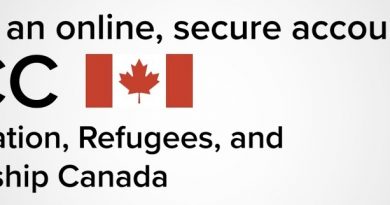Employee Reference Letter and Letter of Employment
Introduction paragraph
The first paragraph under the salutation provides the reader with the context of the letter. In this section, you typically provide your name, along with the name of the candidate. You can describe how you know them and for how long. Then provide the recipient with information about why you sent the reference letter. For example, if you’re writing a reference letter for someone who wants to apply for an open job position, you usually establish this context in the introduction section of the letter.
Qualifications
A significant portion of reference letters discusses the candidate’s qualifications for job positions. It’s beneficial to discuss the qualifications that you know the candidate obtained. You can also discuss how they demonstrated these qualifications in previous positions or places of employment. In this paragraph, you can also discuss the candidate’s skills and how they attempted to improve their skills in the workplace. Also, discuss their behaviour and how it qualified them for their roles.
For example, job seekers who apply for social work positions can benefit from having strong empathy skills, along with crisis management. You can describe these skills in a reference letter to express why they’re qualified to work with clients. Another component of a candidate’s qualifications is their values. It’s beneficial to research the values of the company for which they’re applying and discuss how the candidate exhibits those qualifications in their professional life.
Accomplishments paragraph
You can use the accomplishments paragraph to describe your experience working with the candidate. This is beneficial because it can show the hiring manager how your colleague can use their qualifications to achieve great results in new roles. You can write about specific situations and anecdotes that highlight the candidate’s achievements. Consider which achievements relate directly to the open job position.
Conclusion
The conclusion of your reference letter generally includes your recommendation for the candidate to work with the company or institution they’re applying for. In this section, you can summarize the topics you discussed and provide your reasons for thinking that the candidate is a good fit for the role. You can also include your signature after the conclusion of the reference letter to verify your statement.
For example, if you already have a personal relationship with the hiring manager, you can use an informal signature. You can also include your phone number, email, or any other important contact information in the reference letter. You can use this as an opportunity to encourage them to contact you if they have questions.
Related: How Many References Should I Have? (And How To Request One)
Reference letter template
Here’s an employee reference letter template you can use to help you in writing your own:
[Date]
Dear [name or title of recipient],
I’m writing on behalf of [candidate’s name]. I was their [connection or relationship] at [company or organization] for [number of years]. Based on our professional relationship, I feel confident I can provide you with insight into their suitability for [position or opportunity].
[Candidate’s name] is a [descriptor of work] for [company name]. In the [length of time you’ve known the candidate], I’ve seen [short list of accomplishments]. In particular, [describe specific accomplishment that highlights the necessary skill or knowledge for the position or opportunity].
In addition to [accomplishment from the previous paragraph], [candidate’s name] continually demonstrates [list of skills, qualities, or attributes related to the position for which they’re applying]. They are a [description of work ethic or character trait].
I am delighted to recommend [candidate’s name] for the [name of position or opportunity]. I am happy to provide more information about [candidate’s name]’s work at [company] if needed.
Sincerely,
[Your signature]
[Your full name]
[Your title]
[Your phone number]
[Your email address]
Employee reference letter example
Here’s an example of an effective employee reference letter:
February 8, 2021
Dear Ms. Larkin,
I’m writing on behalf of Alex Marsden. I was their supervisor at Bridge Publishing for three years. Based on our professional relationship, I feel confident I can provide you with insight into their substantial suitability for the lead editor position. Alex Marsden is a junior editor for Bridge Publishing. In the three years I’ve had the pleasure of supervising Alex, I’ve seen growth in their skills, knowledge, and accomplishments. In particular, Alex completed professional development opportunities, absorbed the information and ideas provided at those training sessions, and used them to improve their editing and the writing of their team members.
In addition to devotion to their craft and skill set, Alex continually demonstrates admirable leadership qualities like delegation, compassion, and organization. Alex is extremely professional and I’m pleased that they have the opportunity to use the skills they’ve honed here at Bridge with your organization. I am delighted to recommend Alex Marsden for the lead editor position at your company. I would be happy to provide more information about Alex’s work at Bridge Publishing if needed.
Sincerely,
Tammy Jones
Head of Publishing
123-456-7890
tammy.jones@email.com
What is a letter of employment?
A letter of employment, also known as an employment verification letter, is a formal document from your employer. It states that you currently work for the company and includes details such as your job title, how long you’ve worked there, whether you work part- or full-time, your wage or salary, and your employer’s contact information. Letters of employment are usually brief as they just need to verify your income and position.




![Work Permit [R205(a) – C11]: Canadian Interests – Significant Benefit – Entrepreneurs/Self-Employed](https://go4visa.com/wp-content/uploads/2017/12/AK-Blog.jpg)
